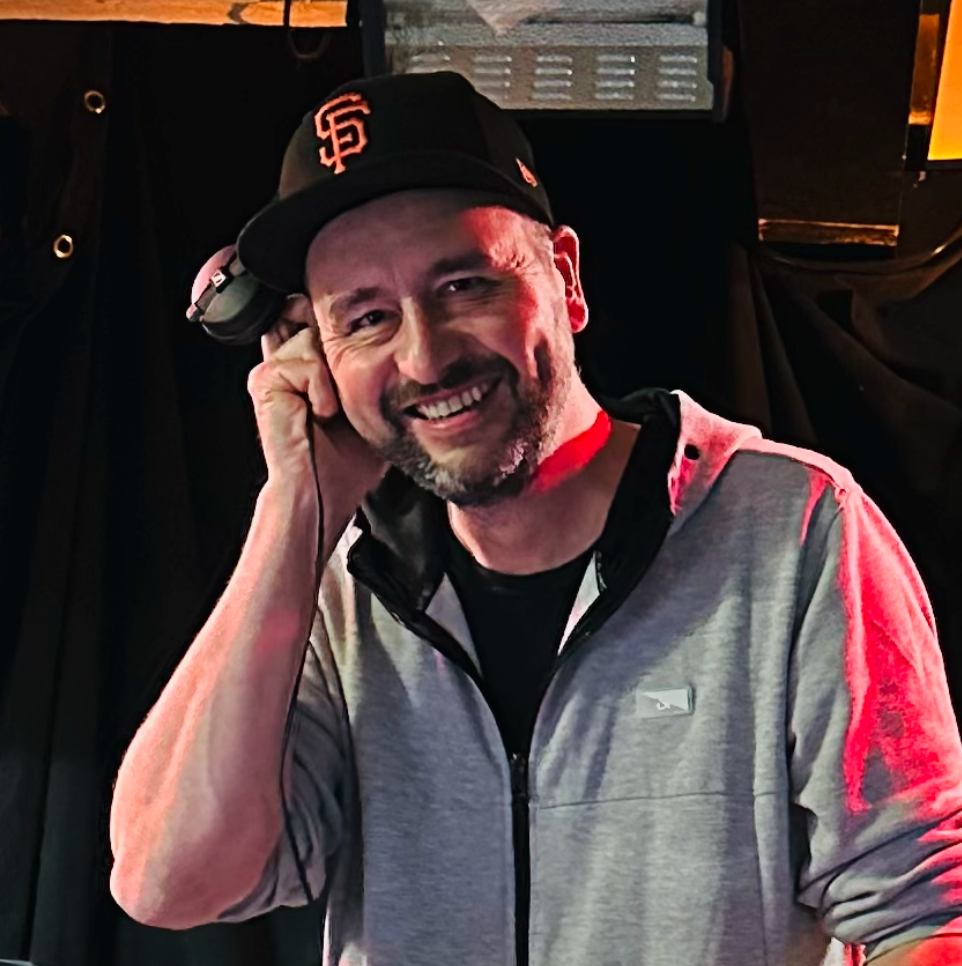Programme
Timings and session details are provided below. All times are in local time (i.e., UTC+1).
| 9:00 | - Coffee / Pastries |
| 9:25 | - Welcome |
| 9:35 | - Keynote - Bernd T Meyer |
| 10:25 | - The Clarity Prediction Challenge Overview + Prizes |
| 10:50 | - Coffee/Tea/Pastries |
| 11:10 | - Prediction Challenge Poster session |
| 12:10 | - Prediction Challenge Oral session |
| 13:10 | - Lunch |
| 14:00 | - ISAAR/Clarity Discussion |
| Future challenges | |
| Sustainability of future challenge activities | |
| 15:00 | - Coffee/Tea (Posters Cont) |
| 15:20 | - Oral Session / Hearing Aid Speech Enhancement + Other Topics |
| 17:00 | - Next steps |
| From spoken speech to sung speech - Cadenza Lyric Challenge | |
| Conversation in noise - CHiME-9 ECHI Challenge | |
| 17:20 | - Close |
Invited Talk
Session Chair: Jon Barker

Bernd T Meyer University of Oldenburg, Germany
Machine learning for computational audiology: Prediction of auditory perception and improvement of speech signals based on deep learning
Machine learning for computational audiology: Prediction of auditory perception and improvement of speech signals based on deep learning
Abstract
To appear.Bio
Bernd T. Meyer received the Ph.D. degree from the University of Oldenburg, Germany, in 2009, where he was a member of the Medical Physics Group. He was a Visiting Researcher in the speech group with the International Computer Science Institute, Berkeley, CA, USA, and worked in the Center for Language and Speech Processing at the Johns Hopkins University, Baltimore, MD, USA. Since 2019, he is professor for Communication Acoustics at the University Oldenburg. His research interests include the relation of speech and hearing, with a special interest in models of human speech perception, automatic speech processing and its applications in hearing technology.Clarity Prediction Challenge
The reports linked to the programme are the technical reports that were submitted with the challenge systems. Authors have been invited to extend these after the workshop and final versions will appear in the workshop proceeding in the ISCA archive at the end of September.Overview
| 10:30-10:50 | The 3rd Clarity Prediction Challenge: A machine learning challenge for hearing aid intelligibility prediction [Slides] [Abstract] ( 1University of Sheffield; 2University of Nottingham; 3University of Salford; 4Cardiff University) |
Poster Session
Session Chair: Jennifer Firth
| 11:10-12:10 | The CPC3 Poster Session | |
| Poster 1 | Non-Intrusive Multi-Branch Speech Intelligibility Prediction using Multi-Stage Training [Paper] ( 1Academia Sinica; 2NVIDIA; 3National Chengchi University) |
|
| Poster 2 | Domain-Adapted Automatic Speech Recognition with Deep Neural Networks for Enhanced Speech Intelligibility Prediction [Paper] ( 1Ewha Womans University, South Korea; 2Purdue University, US ) |
|
| Poster 3 | Predicting Intelligibility for Hearing-Impaired Listeners via Explicit Scores and Pre-trained Feature [Report] (Hong Kong Polytechnic University, China) |
|
| Poster 4 | Non-Intrusive Speech Intelligibility Prediction Using Whisper ASR and Wavelet Scattering Embeddings for Hearing-Impaired Individuals [Paper] ( 1Indian Institute of Technology Jammu, India; 2Tata Consultancy Services Limited Mumbai, India) |
|
| Poster 5 | Integrating Linguistic and Acoustic Cues for Machine Learning-Based Speech Intelligibility Prediction in Hearing Impairment [Paper] (JAIST, Japan) |
|
| Poster 6 | OSQA-SI: A Lightweight Non-Intrusive Analysis Model for Speech Intelligibility Prediction [Paper] (Merry Electronics Co.) |
|
| Poster 7 | Non-intrusive Speech Intelligibility Prediction Model for Hearing Aids using Multi-domain Fused Features [Paper] (Southern University of Science and Technology, Shenzhen, China) |
|
| Poster 8 | Word-level intelligibility model for the third Clarity Prediction Challenge [Paper] (University College London, UK) |
|
| Poster 9 | A Chorus of Whispers: Modeling Speech Intelligibility via Heterogeneous Whisper Decomposition [Paper] (Konkuk University, South Korea) |
|
| Poster 10 | Speech intelligibility prediction based on syllable tokenizer [Paper] (Poznan University of Technology, Poland) |
|
| Poster 11 | Modeling normal and impaired hearing with deep neural networks optimized for ecological tasks [Report] ( 1DTU, Denmark; 2MIT, US) |
Oral Session
Session Chair: Jon Barker
| 12:10-12:30 | Lightweight Speech Intelligibility Prediction with Spectro-Temporal Modulation for Hearing-Impaired Listeners
[Paper] (JAIST, Japan) |
|
| 12:30-12:50 | Intrusive Intelligibility Prediction with ASR Encoders
[Paper] ( 1University of British Columbia,Canada; 2Orka Labs Inc., China; 3Stanford University, US) |
|
| 12:50-13:10 | Towards individualized models of hearing-impaired speech perception
[Paper] ( 1DTU, Denmark; 2MIT, US) |
ISAAR/Clarity Discussion Session
Session Chair: Simone Graetzer
There will be a one hour discussion session that will link up the International Symposium on Auditory and Audiological Research (ISAAR-2025) and the Clarity workshop. The discussion will bring speech and hearing researchers together to discuss the future priorities for hearing device machine learning challenges. What are the needs of hearing device users? What opportunities does machine learning provide for addressing these needs?| 14:00-14:10 | Opening Remarks: Clarity Workshop / ISAAR Workshop [Slides] | |
| 14:10-14:50 | Discussion | |
| 14:50-15:00 | Summary/Conclusion |
Hearing Aid Speech Enhancement + Other Topics
Session Chair: Jesper Jensen
The session will consist of oral presentations each of up to 20 minutes with 5 minutes for Q&A.| 15:20-15:45 | The Dawn of Psychoacoustic Reverse Correlation: A Data-Driven Methodology for Determining Fine Grained Perceptual Cues of Speech Clarity
[Paper] ( 1Simon Fraser University, US; 2Institut FEMTO-ST, France) |
|
| 15:45-16:10 | TF-MLPNet: Tiny Real-Time Neural Speech Separation [Paper] (University of Washington, US) |
|
| 16:10-16:35 | Controllable joint noise reduction and hearing loss compensation using a differentiable auditory model [Paper] (Technical University of Denmark) |
|
| 16:35-17:00 | Say Who You Want to Hear: Leveraging TTS Style Embeddings for Text-Guided Speech Extraction [Paper] (University of Oxford, UK) |
Next Steps
Presenting upcoming/ongoing machine challenges relevant to the community.| 17:00-17:10 | From spoken speech to sung speech - Cadenza Lyric Challenge
[Slides] ( 1University of Leeds, UK; 2University of Nottingham, UK; 3University of Salford, UK; 4University of Sheffield, UK) |
|
| 17:10-17:20 | Processing conversations in noise - CHiME-9 ECHI Challenge
[Slides] Robert Sutherland1, Marko Lugger2, Thomas Kuebert2, Stefan Petrausch2, Juan Azcarreta Ortiz3, Buye Xu3, Stefan Goetze1, ( 1University of Sheffield, UK; 2WSAudiology, Germany; 3Meta Reality Labs Research, UK) |

